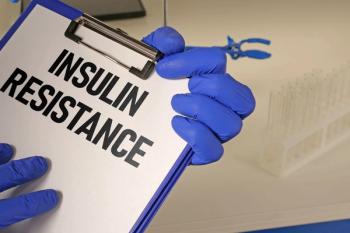
- Drug Topics May 2022
- Volume 166
- Issue 05
Care at the Counter: Women's Health in the Pharmacy
Pharmacists can improve quality of life for the women they care for by offering advice, education, and other point-of-care services.
In 2011, nearly half of the 6.1 million pregnancies—or 45%—in the United States were unintended.1 The highest rates of unintended pregnancy are among women with low incomes earning less than 200% of the federal poverty level, women aged 18 to 24 years, cohabitating women, and women of color.1
Contraceptive access just is one area in which pharmacists can help women, said Veronica Vernon, PharmD, assistant professor of pharmacy practice at Butler University College of Pharmacy & Health Sciences in Indianapolis, Indiana. Access to a pharmacist can also help women who experience menstrual disorders, including menstrual pain, irregular periods, and heavy or unusual bleeding.2
Access to care for women with menstrual disorders was particularly acute during the COVID-19 pandemic, noted Vernon, who is also a clinical pharmacy specialist in ambu- latory care for gynecology and primary care at Richard L. Roudebush Veterans Affairs Medical Center in Indianapolis. More women than men missed recommended preventive services, including yearly checkups and routine tests, and women with low incomes were more likely to have missed these preventive health services.3
A variety of factors make care access challenging for women with lower incomes, including inconsistent transportation, lack of childcare, limited insurance coverage, and a work schedule that prevents them from going to medical appointments, according to a commentary published in Pharmacy.4
“Equipping community pharmacies with specialized skills in family planning will increase their ability to meet patient and community needs and subsequently reduce barriers to access. Newly developed learning resources...are a bridge to successfully implementing practices [that] reduce stigma, increase patient satisfaction, and improve health outcomes,” wrote the authors, one of whom was Sally Rafie, PharmD, BCPS, APH, founder of Birth Control Pharmacist and a pharmacist specialist at University of California San Diego.
Pharmacists’ Role in Women’s Health
Because 91% of Americans live within 5 miles of a community pharmacy, pharmacists are in a unique position to fill these health care gaps.5 “[Pharmacies] can be a public health hub in their communities,” Vernon said.
Pharmacists also play a meaningful role in the inpatient environment. Kayla Popova, PharmD, a clinical pharmacist specialist in obstetrics and gynecology at Michigan Medicine in Ann Arbor, spends her days rounding with obstetrics specialists who see women with high-risk pregnancies. “It’s very important to have a pharmacist on the women’s service,” Popova said.“When a woman is pregnant, there are certain medications that can’t be taken. They’re not safe in the first trimester, [but] they may be safe in the second or third trimester.” And because of some women’s past medical history, taking birth control with a lot of estrogen isn’t an option because it can lead to thrombosis, added Popova, who is also an adjunct clinical instructor in pharmacy at University of Michigan.
Providing Contraceptive Access
Pharmacists face hurdles in providing access to contraception. Without a collaborative practice agreement, pharmacists can only prescribe con- traceptives in 20 states.6 Pharmacists, however, are aware that women experience challenges accessing birth control. “We’ve all received those panic[ed] phone calls,” Rafie said.
The pharmacist’s role is to serve as a resource to patients who need birth control, Rafie explained. That includes counseling and helping patients pick the contraception method that works best for them. And in states where pharmacists can prescribe contraception, that role includes writing a prescription. “This is a public health challenge,” she said.“It’s critically important that women have autonomy over their own bodies and their own health.”
Rafie, founder of the San Diego–based Pharmacists Clinic, provides contraception and other clinical services in a community pharmacy environment. Educating patients about the pharmacist’s ability to prescribe birth control is important as well.“ I definitely encourage pharmacists to make it very apparent that they’re offering this service,” she said. Education opportunities include sharing posts on social media, wearing buttons that promote the service, and using counter tents. Rafie also recommended providing a private or semiprivate space—or at least a sound barrier—to support women speaking with a pharmacist about birth control options.
Addressing Menstrual Pain
Pain, psychological complaints, and tiredness are the most common symptoms associated with menstruation, and during menstruation, 1 in 3 women refrain from daily activities due to these symptoms.7 When a pharmacist sees a woman browsing the menstrual pain–relief section of the pharmacy, it’s a great opportunity to approach and ask questions, Vernon said. She recommends using this conversation starter: “You’re here looking for menstrual pain relief. What are your symptoms? How long has this been occurring?”
“You’re not going to have 20 [or] 30 minutes for this conversation,” Vernon said.“But you can have a 2-minute conversation with a patient to ask a few questions and determine if there’s something more going on than menstruation...such as overlooked endometriosis.” She also recommends using this opportunity to connect the woman with a gynecologist if she doesn’t already have one. Of course, this requires doing some research in advance to develop a list of obstetricians-gynecologists.
Beyond “Bikini Medicine”
In her talk at a 2014 TEDxProvidence event, Alyson McGregor, MD, now the associate dean of faculty affairs and development at the University of South Carolina School of Medicine Greenville, discussed the mistake of merely focusing on reproduction when it comes to women’s health.8
“Women’s health became synonymous with reproduction: breasts, ovaries, uterus, pregnancy,” McGregor said in her talk. “It’s this term we now refer to as ‘bikini medicine.’ And [it] stayed this way until... the 1980s, when the concept was challenged by the medical community and the public health policymakers, when they realized that by excluding women from all medical research studies, we actually did them a disservice—in that apart from reproductive issues, nothing was known about the unique needs of the female patient.”
Vernon agrees. Women’s health should also focus on tobacco-cessation management, cardiovascular health, and osteoporosis. And crucially, pharmacists must also be prepared to provide women’s health services to patients who aren’t cisgender women;9 transgender individuals require these services as well.
Immunizations, preventive care, medication management, and life- style changes are all services that pharmacists can provide.“Starting with immunization is a great way to focus on women’s health,” Vernon said. Pharmacists can ensure that all patients get their yearly flu vaccine and are up-to-date on human papillomavirus immunization as well, which prevents multiple types of cervical cancer in cisgender women and genital warts, anal cancers, and cancers of the mouth, throat, neck, and head in both women and men.10
“Everything we look at in medicine is centered on a male lens,” Vernon said. Increasing awareness of these issues, in the pharmacy and beyond, is the first step to more equitable health care for everyone.
References
1. Unintended pregnancy in the United States. Guttmacher Institute. January 2019. Accessed April 18, 2022.
2. Period problems. Office on Women's Health. Updated March 16, 2018. Accessed April 18, 2022.
3. Frederiksen B, Ranji U, Salganicoff A, Long M. Women's experiences with health care during the COVID-19 pandemic: findings from the KFF women’s health survey. Kaiser Family Foundation. March 22, 2021. Accessed April 18, 2022.
4. Pfaff A, Rafie S. Expanding pharmacy capacity for patient-centered reproductive health services. Pharmacy (Basel). 2020;8(4):236. doi:10.3390/pharmacy8040236
5. Face-to-face with community pharmacies. National Association of Chain Drug Stores. Accessed April 18, 2022.
6. Pharmacist prescribing: hormonal contraceptives. National Alliance of State Pharmacy Associations. December 1, 2021. Accessed April 18, 2022.
7. Schoep ME, Nieboer TE, van der Zanden M, Braat DDM, Nap AW. The impact of menstrual symptoms on everyday life: a survey among 42,879 women. Am J Obstet Gynecol. 2019;220(6):569.e1-569.e7. doi:10.1016/j.ajog.2019.02.048
8. McGregor A. Why medicine often has dangerous side effects for women. TEDxProvidence. September 2014. Accessed April 18, 2022.
9. American College of Obstetricians and Gynecologists’ Committee on Gynecologic Practice; American College of Obstetricians and Gynecologists’ Committee on Health Care for Underserved Women.
10. HPV vaccine: who needs it, how it works. Mayo Clinic. September 18, 2021. Accessed April 18, 2022.
Articles in this issue
over 3 years ago
The Future of Pharmacy is Digitalover 3 years ago
Pharmacy’s New "Dirty Little F-Word”over 3 years ago
How to: A Guide for Launching HbA1c Point-of-Care Testingover 3 years ago
Community Pharmacies Make Care Possible in Medical Desertsover 3 years ago
Abrocitinib for Atopic Dermatitisover 3 years ago
Women in Pharmacy Make Their Mark on the Professionover 3 years ago
New Highs in Cannabis PharmacyNewsletter
Pharmacy practice is always changing. Stay ahead of the curve with the Drug Topics newsletter and get the latest drug information, industry trends, and patient care tips.


















































































































































